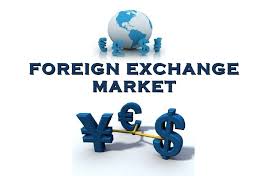Overview of foreign exchange market:
Foreign exchange market is the biggest financial market in the world with over $5 trillion worth of transactions every day. In simple terms Forex is a global market in which currencies are traded. Financial centers around the world like New York, London, Paris, Singapore, Tokyo, Sidney and Hong Kong function as medium of trading between wide range of different types of buyers and sellers across the globe, around the clock, five days a week. This is the market where relative value of currencies is determined. Most of the foreign exchange dealers are bankers, a few insurance companies and other financial firms. Hence sometimes this behind the scenes market is called as “inter bank market”. International trade and investments are assisted by foreign exchange market as it helps enables currency conversion.
In a typical forex transaction, a party buys certain amount of one currency by paying for certain amount of other currency. The foreign exchange market is unique because of its huge volumes of trading, its continuous operation and low profit margins compared to other fixed income markets. It is referred to as the closest market to the ideal of perfect competition.
Market Players:
The foreign exchange market, unlike a stock market, is divided into different levels of access. Top most is the inter bank market consisting of Securities dealers and largest commercial banks. A part of Forex transactions comes from financial activities of companies approaching foreign exchange to pay for goods or services. The volume of transactions coming from commercial companies is relatively smaller and has short term impact compared to that of banks or speculators. Central banks of different nations play a crucial role in foreign exchange markets as they try and control the inflation, money supply and/or interest rates. National bank of each country will fix a exchange rate daily for monitory purposes called foreign exchange fixing.
Determinants of exchange rates:
Some of the theories that explain the changes in exchange rates in a floating exchange rate regime are:
- Balance of payments model: This model focuses mostly on tradable goods and services but ignores the role of capital flows across the globe.
- International parity conditions: Some of the phenomena included are interest rate parity, relative purchasing power parity, domestic fisher effect and international fisher effect.
- Asset market model: This theory considers currency as a crucial asset class in construction of investment portfolios. Prices of assets depend on the willingness of the people to hold the existing assets, which in turn depend on the expectations of the holders on the future worth of the assets.
It can be clear understood that, foreign exchange market is influenced by many macro economic factors and at the end the fluctuations in the currency prices are a result of the dual forces of supply and demand.
Click here for government certification in Accounting, Banking & Finance





6 Comments. Leave new
Very relevant information..Good effort.Keep it up!
very reletive information.
Nicely written with relavant information.. Nice..
This is something new for me 😀
But the article was structured very well that 😀 i was able to understand the things easily and simply ;D
Got to know that Foreign exchange market is such a big financial Market
Determinants of exchange rate were also explained well as i read about them in some other post 😀
GOod work 😀
well explained
very well explained